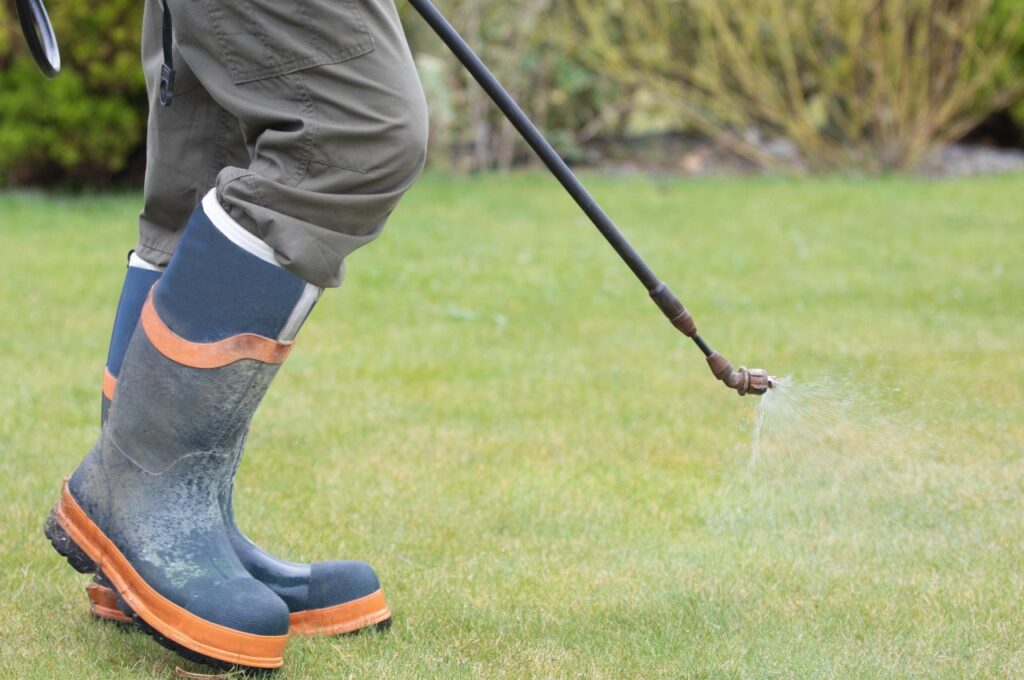What is sustainable use of pesticides?
Sustainability means; to meet the needs of the growing world population while ensuring minimal impact on the environment and humans as well as productivity.
Although pesticides are used widely across the horticulture sector in its endeavor to secure greener cities, larger forests and park space, their application is perceived by many as an obstacle towards the achievement of sustainability: the main concerns are linked with their adverse effects on human health and the environment. Thus impacting sustainability. There are situations where using a pesticide is unavoidable, however when possible mechanical and cultural practices should be taken as a first resort. Chemicals should only be used as a last resort. Do your research, plan for the future, and don’t hesitate to contact an expert to help identify and treat your problem areas.

Disadvantages of pesticides
Pesticides can contaminate soil, water, turf, and other vegetation. In addition to killing insects or weeds, pesticides can be toxic to a host of other organisms including birds, fish, beneficial insects, and non-target plants. Insecticides are generally the most acutely toxic class of pesticides, but herbicides can also pose risks to non-target organisms.
– Surface water contamination
– Groundwater contamination
– Soil contamination – Effect on soil fertility
– Contamination of air and non-target vegetation
– Non-target organisms
Benefits of pesticides
Pesticides can have many direct benefits, from lowering plant competition by removing weeds to, controlling diseases and pest invasions. Ultimately increasing the coverage and quality of a sports turf surface. Secondary benefits can also have a large impact, a turf field with less diseases can in theory be used for a much greater period of time without deterioration.
– Improving plant productivity – Plant growth regulators
– Protection of the plant (removing weeds)
– Quality of the plant and seeds
– Prevent and cure diseases
– Prevent and remove pest infestations

What is integrated pest management (IPM)?
Integrated pest management (IPM) is a coordinated and planned strategy for the prevention, detection and control of pests, weeds, and diseases. IPM is an ecosystem-based strategy that focuses on long-term prevention of pests or their damage through a combination of techniques such as biological control, habitat manipulation, modification of cultural practices, and use of resistant varieties. Pesticides are used only after monitoring indicates they are needed according to established guidelines, and treatments are made with the goal of removing only the target organism. Pest control materials are selected and applied in a manner that minimizes risks to human health, beneficial and nontarget organisms, and the environment. The continuing loss of plant protection products and rising levels of resistance means that the conventional crop protection toolbox is shrinking. At the same time, many policy drivers emphasize a need for reduced reliance on pesticides.
IPM programs combine management approaches for greater effectiveness
The most effective, long-term way to manage pests is by using a combination of methods that work better together than separately. Approaches for managing pests are often grouped in the following categories.
Biological control is the use of natural enemies/predators, parasites, pathogens, and competitors to control pests and their damage. Invertebrates, plant pathogens, nematodes, weeds, and vertebrates have many natural enemies.
Cultural controls are practices that reduce pest establishment, reproduction, dispersal, and survival. For example, changing irrigation practices can reduce pest problems, since too much water can increase root disease and weeds.
Mechanical and physical controls kill a pest directly, block pests out, or make the environment unsuitable for it. Traps for rodents are examples of mechanical control. Physical controls include mulches for weed management, steam sterilization of the soil for disease management, or barriers such as screens to keep birds or insects out.
Chemical control is the use of pesticides. In IPM, pesticides are used only when needed and in combination with other approaches for more effective, long-term control. Pesticides are selected and applied in a way that minimizes their possible harm to people, nontarget organisms, and the environment. With IPM you’ll use the most selective pesticide that will do the job and be the safest for other organisms and for air, soil, and water quality; use pesticides in bait stations rather than sprays; or spot-spray a few weeds instead of an entire area.
